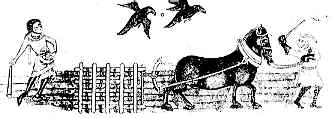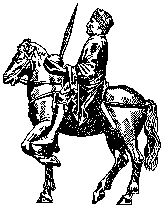

Charlemagne


If you are looking at this page without frames, there is more information about medieval writing to be found by going to the home page (framed) or the site map (no frames).
| The Laity | |||
| Among the many memorable characters in the rambling and philosophical great Australian novel Such is Life, by Tom Collins, is an educated Irishman who lives in a remote boundary rider's hut. Despite his isolation, he displays a remarkable degree of erudition, steeping his conversation with quotes from the Bible and Shakespeare and Classical references and displaying an extraordinary knowledge of American history and the explorers of the Great Australian Bight. However, it becomes apparent that he avoids discussion of other than a small selection of his favourite subjects. At a later stage in the story it is discovered that his outback library consists of a copy of Shakespeare, a Bible, a dictionary with a glossary of Greek and Roman mythology and one volume of a magazine which contains some articles on American history and the explorers of the Great Australian Bight. | |||
| Rory the boundary rider resembles the medieval layman in that however much he admires scholarship, there are just not many books available for him to read. Unlike the medieval layman, however, he was brought up to learn through reading and has forgotten, or never knew, how to learn by other means; a mental aberration according to many of the rough bushmen of the story who are as illiterate as medieval peasants but who survive in precarious circumstances by reading the signs in the living world around them. | |||
 |
The medieval peasantry were depicted in books they would never own, or even see, like the fancy psalters produced for the aristocracy. They did not get their agricultural knowledge from books. | ||
| Image of ploughing from the Luttrell Psalter, now in the British Library. (From New Palaeographical Society 1904) | |||
| The question "Were medieval people literate?" is not useful or sensible. It is a nonsense. Degrees of literacy and types of literacy changed during the course of the middle ages. At any time certain classes of people were more literate than others. Reading literacy was not necessarily accompanied by writing literacy. Reading never fully replaced oral culture or teaching, although it supplemented it for certain classes. Some classes of people remained illiterate throughout the course of the middle ages and learned their life skills by other means. Some medieval people were more literate than ourselves. When did you last scribble out a philosophical treatise in Latin? |  |
||
| The Emperor Charlemagne was a great protagonist of literacy, but he himself, to his regret, was unable to learn to write with facility, or at least that is what is stated by his biographer, Einhard. | Charlemagne |
||
| There is a vigorous debate in the scholarly literature on the subject of lay literacy, but from our list here see Parkes 1991, also Clanchy 1993, also de Hamel 1986 also Bischoff 1990. There is information about a research project on the relationships between written, oral and non-verbal communication at the website Communication in the Earlier Middle Ages. | |||
| The spread of literacy through the areas of northern Europe occupied by the barbarian invaders after the fall of the Roman Empire was through the medium of the missionising church. The books produced were the works of liturgy and patristic literature required for the job in hand. The language was Latin. The Latin terms litteratus, meaning a person literate in the Latin language, and clericus, meaning a priest, became synonymous. By the 13th century a lay person who happened to be litteratus might be referred to as clericus, even though this was not literally true, while a simple village parish priest might be a little deficient in the litteratus department. | |||
 |
The Merovingian kings of France maintained a small bastion of literacy in the period before the accession of Charlemagne. Not only did they maintain a royal chancery that produced administrative documents, the kings signed their diplomas themselves. The kings and the aristocrats supposedly engaged in literate and scholarly pursuits. | ||
| Part of a diploma of the Merovingian King Childebert III. of AD 695 (Paris Archives Nationales, K3 Nr. 9). (From Steffens 1929) | |||
| The royal library of Charlemagne is legendary and the emperor himself is credited with a revival of the scholarship of the ancients and a revaluation of the written word. The royal library was dispersed after the death of Charlemagne, but later rebuilt. Prestige codices of the Carolingian and later Ottonian periods were heavily decorated with gold and have been seen as treasures of the realm, that were collected and redistributed along with lands and other booty in a system of dispersal of wealth and power that kept the Carolingian machine functioning. This view of books as valuable objects might imply that being read was not a major part of their purpose among the Carolingian aristocracy. However, surviving wills of Carolingian magnates indicate that their book collections contained practical works on warfare and agriculture that were there to provide written information. |
 |
||
| The architecture of Byzantium combines with the barbarian splendour of gold mosaics and a jewelled gold altar in the Palatine Chapel of Charlemagne at Aachen. | |||
|
|
|||
|
If you are looking at this page without frames, there is more information about medieval writing to be found by going to the home page (framed) or the site map (no frames). |
|||